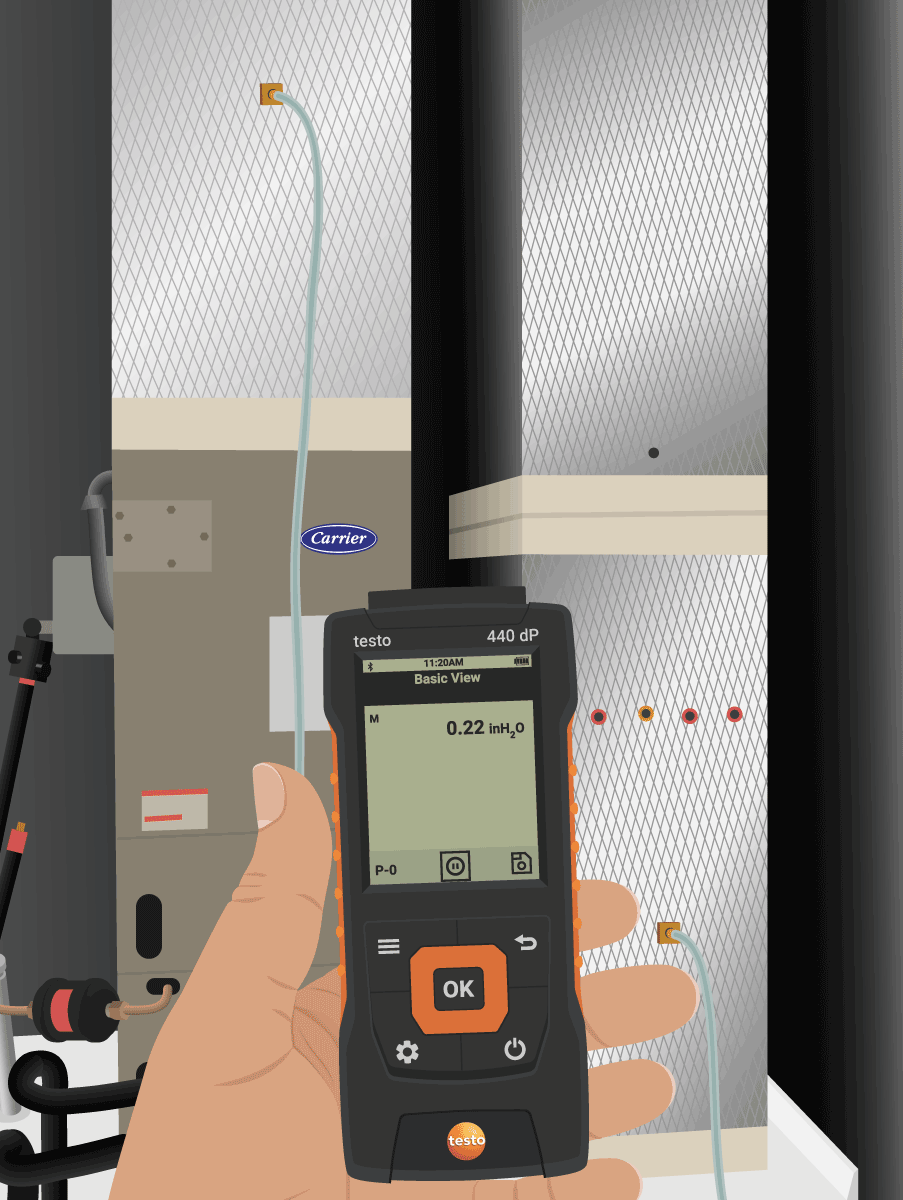Get Tech Tips
Subscribe to free tech tips.
Inches of Water Column

Low pressures are often measured in inches of water column or “WC. Like most units of measure, it has a very simple origin; in a water manometer, 1″ of water column is literally the amount of force it takes to raise the column of water by 1”. While some water manometers (water tubes) are still in use, the vast majority are either dial or digital gauges that still use the same scale.
One PSI is equal to 27.71 inches of water column, which is why inches of water column are most often used to measure pressures under 1 psi. These low pressures are most often read using a manometer (shown below; the inches of water column unit is presented as inH2O) or a Magnehelic gauge.

When we measure inches of water column with our tools, we calibrate it at atmospheric pressure or the gauge scale instead of the absolute scale. That means that for a manometer or Magnehelic to be properly used, you MUST recalibrate them before each use (many auto-calibrate to zero) to compensate for changes in elevation and barometric pressure. At altitudes over 2000′ above sea level, you will also need to follow manufacturer recommendations to adjust the gas valve and even change orifice sizes, in some cases, due to the effect the lower atmospheric pressure has on the gas.
Gas pressure is usually measured in “WC, so we most commonly set single-stage appliances to 3.5″WC on natural gas and 11″WC on propane. This varies based on manufacture specs, combustion analysis, and meter clocking tests. Always read the manufacturer's specs.
We also use “WC to check air static pressure on systems. Static pressure is the pressure exerted in all directions in a contained space; it is not the directional force of the air.
We use a manometer or a Magnehelic and measure the negative air pressure in the system return side before the blower (and after the filter whenever possible) and the positive pressure supply air side directly after the blower. By calculating the differential, you come up with the total external static in inches of water column. For example, if the return static is -0.3″WC and the supply static is +0.2″WC, the total static is 0.5″ WC.

Many manometers and all Magnehelic gauges (to my knowledge) have two ports so that you can read the differential pressure all at once. That also comes in handy when reading/testing differential pressure on many furnace air pressure switches to ensure that they make and break at the proper pressure.
—Bryan Orr











Comments
To leave a comment, you need to log in.
Log In